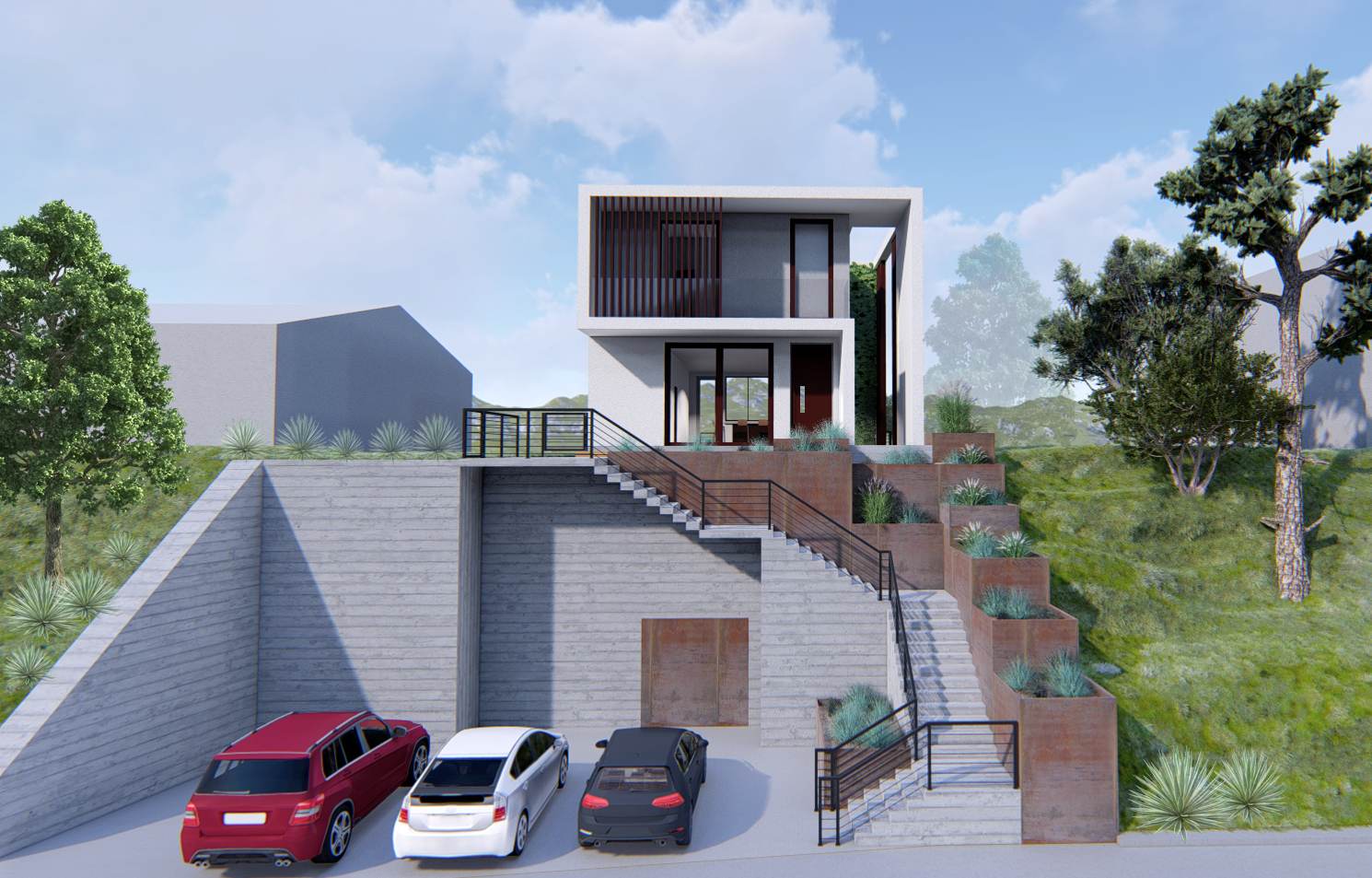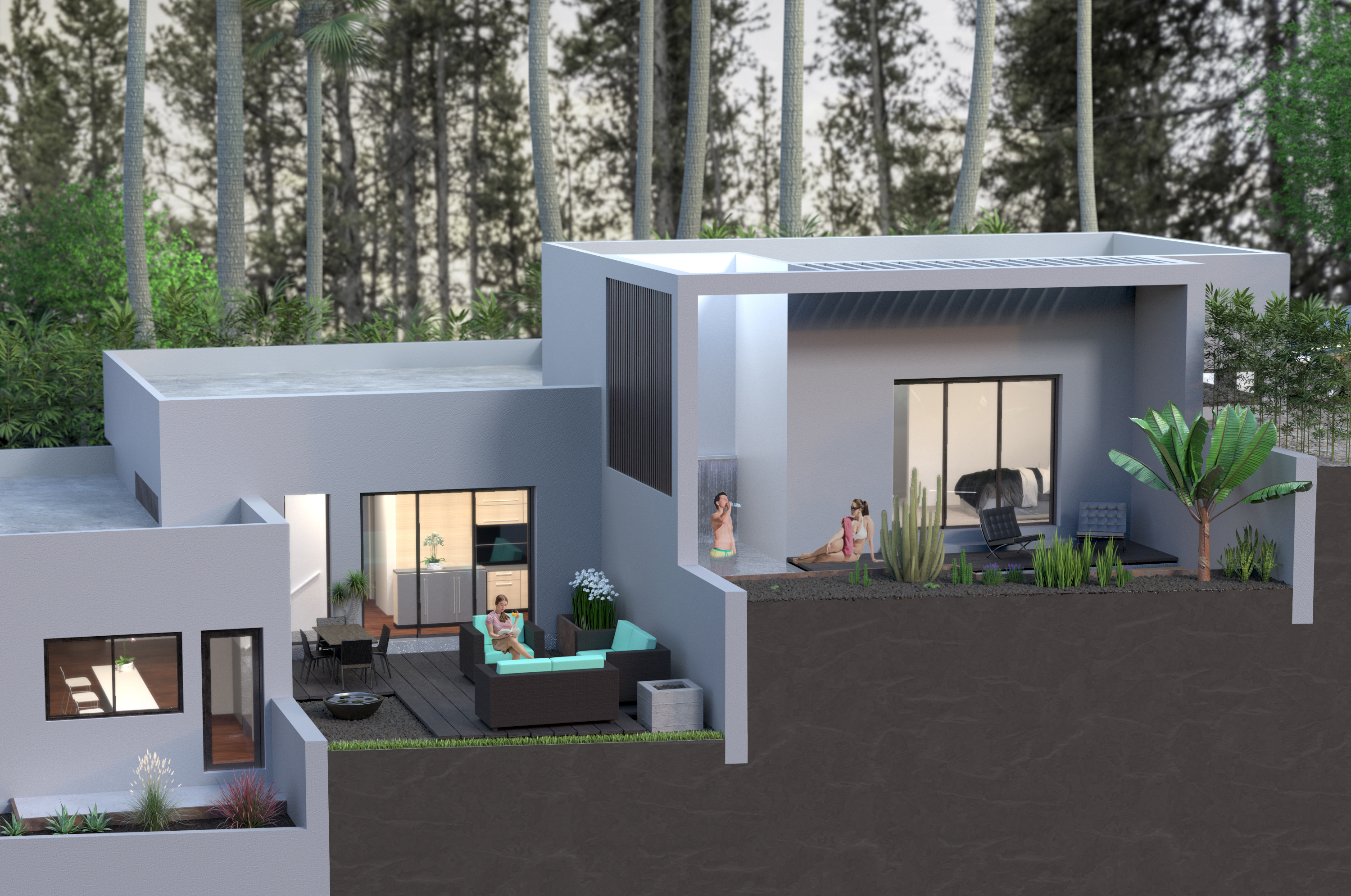Getting to Know New SCI-Arc Alumni Council Chair Manori Sumanasinghe
Manori Sumanasinghe (B.Arch, '14) is a Los Angeles-based designer and entrepreneur working towards her California licensure in architecture. She is passionate about the role of architecture and design and its impact on a community’s well-being. This has taken her on a journey that led her to found Neumascape Studio in 2018. Sumanasinghe’s passion in community building is established on a strong foundation of democracy, ethics, empathy, and an acknowledgement of the intrinsic connections we have with each other and our surroundings.

Sumanasinghe’s approach to projects often seeks to honor the legacy of place, space, object, or people. Her background prior to architecture comprises formal education in marketing, as well as industry experience in apparel, e-commerce, business development, and nonprofit management. In 2019, influenced by her own experience in tackling stress and burnout, Sumanasinghe along with her husband Nelson Abreu PE co-founded the well-being tech startup Neuma Being.
Equipped with a variety of skills, interests, a vibrant network, and a life-long commitment to learning and meaning, Sumanasinghe is on a mission to create a body of work that reflects her values and passions in architecture, design, technology, and well-being—all of which appropriately coincide with her recent appointment as Chair of the SCI-Arc Alumni Council.
We spoke with Manori about her new role as well as how her time at SCI-Arc influenced her practice to identify and realize the potential of people, spaces, and places through design and technology.

First of all, thank you for speaking with me, Manori. Secondly, congratulations on your appointment as chair of the alumni council. How did you find yourself on the alumni council? What originally drove you to want to be involved?
When I was a student at SCI-Arc, I was pretty engaged with STUN, the student union. I was the undergraduate rep for lectures and then the student union rep to the academic council. I continued to be involved all throughout my time at SCI-Arc.
When I graduated with my B.Arch in 2014, I felt like one of the things that I really cherished about the school was the network. When I was a student there were many alumni who would engage at different levels, which I thought was really great. Transitioning from school to the professional environment was a bit of a shock to the system. Having all these people that I could tap into and lean on for advice and navigating career development was so helpful. I thought it would be nice if I could offer the same thing to the next generation.
Since then, I've been getting more and more involved, and it's really been such an honor to be able to give back to the school, so that we can foster the next generation of aspiring designers and architects.
Can you talk about your background and how that informed both your experience studying at SCI-Arc and now in your work with the alumni council?
I come from a very small town in the island nation of Sri Lanka. When I grew up, there were less than 100,000 people in my town. It's a World Heritage City—which is amazing, but very small. And then being from a family with modest means, I never traveled abroad and didn't get exposed to a lot of culture.
I was a scholarship student and came into SCI-Arc as a transfer in my third year. It was amazing, but a shock—another level of critical thinking and projects, including the way SCI-Arc pursues and advances the discourse. It was a lot, but I realized that by surrounding myself with people of a great caliber, I would up my game so much. At SCI-Arc you are constantly in a challenging environment where you're learning and questioning everything. I walked out so enriched. To be a part of a community that gave me so much meant and still means a lot to me.
It was really fulfilling to first be engaged just as an alumna, supporting and mentoring students, and now to be able to facilitate and drive some of the initiatives—it's incredibly rewarding.

That's incredible and very exciting. What was the process that first drew you to architecture?
In Sri Lanka, I grew up during a civil war, from the time I was born to when I left. I experienced a very conservative sort of a background where girls are encouraged to study, but not to think or act independently. As a young child, I always had a sense that there was a lot more to life than what I was being told and what I saw.
I had an opportunity in 1996 to represent Sri Lanka in an art competition during which they brought together 70 kids from around the world to Rhode Island. I was one of the three kids who came from Sri Lanka. For the first time, I felt I could actually be anything I wanted to be, outside of the limited options that I’d been presented with by my culture. When I went back home, I thought about what I really wanted to do. I realized I cared about building community, and in my mind, the best way to do that was through architecture. I got to combine my interests in creating and art, as well as in learning about physics, materials, and research.
When I left high school, I started working so I could save up to go to architecture school. That career culminated in a management role with Nike manufacturing in Asia. That gave me the opportunity to travel and expand my horizons a little bit more. I started doing a marketing degree on the side, but I still had my eyes on architecture. I felt that it would challenge me in all the right ways and appealed to an idea of a mission or purpose in life that there's something bigger, and that lies with building community.
And from that how did you find yourself at SCI-Arc?
I was 26 when I moved to the US to go to architecture school. I went to the CUNY system in NYC for a year and a half. Around the time I was admitted to Pratt, I met my current husband. His mom was not well, so I moved with him to Miami and transferred to a community college so that I could take some classes and figure out what the next step would be. One of the instructors there, Mario Ortega, was a huge fan of SCI-Arc. Every year, he brought together a group of students to visit SCI-Arc and to see California. I was a part of one such group. I was completely blown away. It felt like it had the right kind of energy that was not just about the built environment and design, with a great studio culture, but it was also about bringing people together, creating place, and driving social change and social justice. That appealed to me a lot. I was also able to see a lecture by Eric Owen Moss at that time. Something that he said stuck with me: “Architecture is realizing the potential of a place or a person.” Later that year, I transferred to SCI-Arc and moved to LA.
I can definitely see those connections made through that process. From that, what have you been doing for your work since you graduated from SCI-Arc?
Since I graduated, I've been in the SCI-Arc circles. I worked under the mentorship of Ming Fung and Craig Hodgetts at HplusF. Then I went on to work for another firm that did residential projects for a while, because I always knew I wanted to have my own firm. I wanted to get a feel for what it’s like to work for different types of firms and on different kinds of projects.
In May 2018, I took a little sabbatical to figure out where I wanted to go from there and was eventually inspired to start my own firm in August later that year. I now have my firm Neumascape Studio in Chinatown in Los Angeles, which I identify as a design and tech studio because I don't want to limit the kind of projects that we work on to be just buildings, but also have the flexibility to experiment with technology and objects. One of the projects that I am experimenting with has now spun off to become its own startup focused on mental fitness and well-being tech.

What are your current plans for the Alumni Council?
It happened to be a cool coincidence that I get to be the chair as the school is going into its 50th anniversary, which is an absolute honor and a privilege. I'm so thankful and grateful to have that opportunity during this time.
Our alumni council doesn’t operate with a lot of hierarchy. We have eight members, and out of the eight, six are active and two are emeritus. The six of us equally share responsibility. So even though I'm the chair, all of us are really good about having self-initiative and being equally involved with everything that we do. We see our role as embodying the voice of alumni and supporting the administration in furthering the academic agenda. Some of our priorities include expanding our network and enriching the SCI-Arc community, providing mentorship to the students, and supporting fundraising. Previous Alumni Council leaders like Dan Weinreber, Bryan Flaig, and John Winston set a good foundation for us to continue to build a strong agenda for the future of the Alumni Council.
We have a few projects that we are prioritizing leading up to the 50th, one of which will be to create an archive of alumni work over the past five decades. We're in the process of organizing ourselves and contacting all the alumni over the next few months to give them an opportunity to submit any kind of work, architecture or not. The archive will hopefully produce a printed publication, as well as lead to a digital archive in the next few years, including some potential exhibitions.
This all sound like it would be incredibly compelling for SCI-Arc students, especially those that you're mentoring and guiding in their own identities post-graduation, because there are so many different directions in which architecture can take students.
SCI-Arc is always pushing the boundaries of architecture, design, tools, methods, and the discourse. There’s a lot of experimentation, curiosity, and excitement. In the Alumni Council, we recognize that it is easy to feel that what alumni practice professionally post-SCI-Arc may feel disconnected from all of that excitement and the experimentation, and even question if what we do professionally is relevant to SCI-Arc anymore. But the thing is, every alum is a part of the legacy of SCI-Arc. What each person goes on to do with their lives is inevitably influenced by their time at SCI-Arc. We really want to leverage the fact that a lot of our alumni are everywhere in the world doing remarkable things. We want to celebrate this, bring us closer, and uplift each other.
In working with the administration, we launched our own professional social network: the alumni platform—think of it like SCI-Arc LinkedIn. The alumni platform is a great way to celebrate the work of our alumni, make announcements, promote networking, and facilitate mentorship.
What would you like to see in the future as part of your role as Chair of the Alumni Council?
This year, we are piloting a mentorship program with the recent and upcoming grads and current students to pair them up with more experienced and accomplished alumni. We are currently gathering feedback from the pilot participants and started working with STUN to see what the students need from a mentoring program. We want to create opportunities for both short-term mentorship to prepare for job placement, as well as long-term mentorship for career transitions and advancement.
We have been working closely with the Development Office and Student Services to support students and recent grads to transition from the academic environment to the professional setting—to get their portfolios and work samples ready for placement after graduation, provide professional mentoring, and encourage them to expand their network. We want to tap into the knowledge and experience of our alumni to support the next generations to thrive and do remarkable things with their careers as well.
We are also always looking for more and deeper opportunities for how we can get involved with our LA community. So yeah, stay tuned!
As a SCI-Arc alumna yourself and now as chair of the alumni council, how would you like to see the school evolve in terms of its culture and where do you see it heading in the future?
I have come to really appreciate over the last two years that students have become really interested in social agendas. They were really vocal about Black Lives Matter and AAPI hate, homelessness, as well as social justice as a whole. I think it makes what we do more relevant. Doing experimentation, research, and figuring out new technologies, materials, and methods—that's what sets the spark in all of us—but figuring out how to integrate it in a meaningful way has been really exciting to watch.
I think the leadership is doing a good job at integrating all of this more actively into the pedagogy and the identity of the school. The students and the institution itself are becoming more and more engaged, and for me that's very exciting.
I also love the fact that we continue to produce leaders. For me, SCI-Arc is more than an architecture school, it's a crucible of leadership. It's a place where we find and foster leaders, whatever industry they end up going into. I’d like to see more of that. To end up at SCI-Arc, you must have something remarkable within you. It's just so incredible to watch the how school is evolving and what it is becoming.
That's such a lovely way to encapsulate SCI-Arc. In your experience, are there any other contributing factors needed to realize this vision?
I really appreciate the relationship we have with the current SCI-Arc administration, especially the Development Office. We work closely on projects to benefit the larger SCI-Arc community. There is great rapport between the Alumni Council, the administration, STUN, and the Board of Trustees. This enables us to have frank and open dialogue, sometimes about difficult topics, that lead to productive action—which is really important. We all love being a part of the council and being able to be the voice for alumni at this point. We want to expand our network. We want to grow our community and strengthen the bonds.
In architecture schools in the US, you can see a better balance of genders, international to local ratios, and diverse backgrounds. But schools are generally better than the reality of the architecture industry as a whole. I’d like to see that changing. I would love to see more representation in the field of architecture, more people of color and women in leadership positions in architecture. For this to happen we have to have more local, California-based, and BIPOC student enrollments from these groups and we have to actively support these groups in their career advancements.
What I realize is that if it becomes normal to see somebody like me out there, maybe it'll encourage other people of different backgrounds to get themselves out there and take action, promoting those difficult and critical conversations, and realizing that you have a lot more agency than you realize. I think the more we do this, the better equity we'll bring to the industry as a whole.